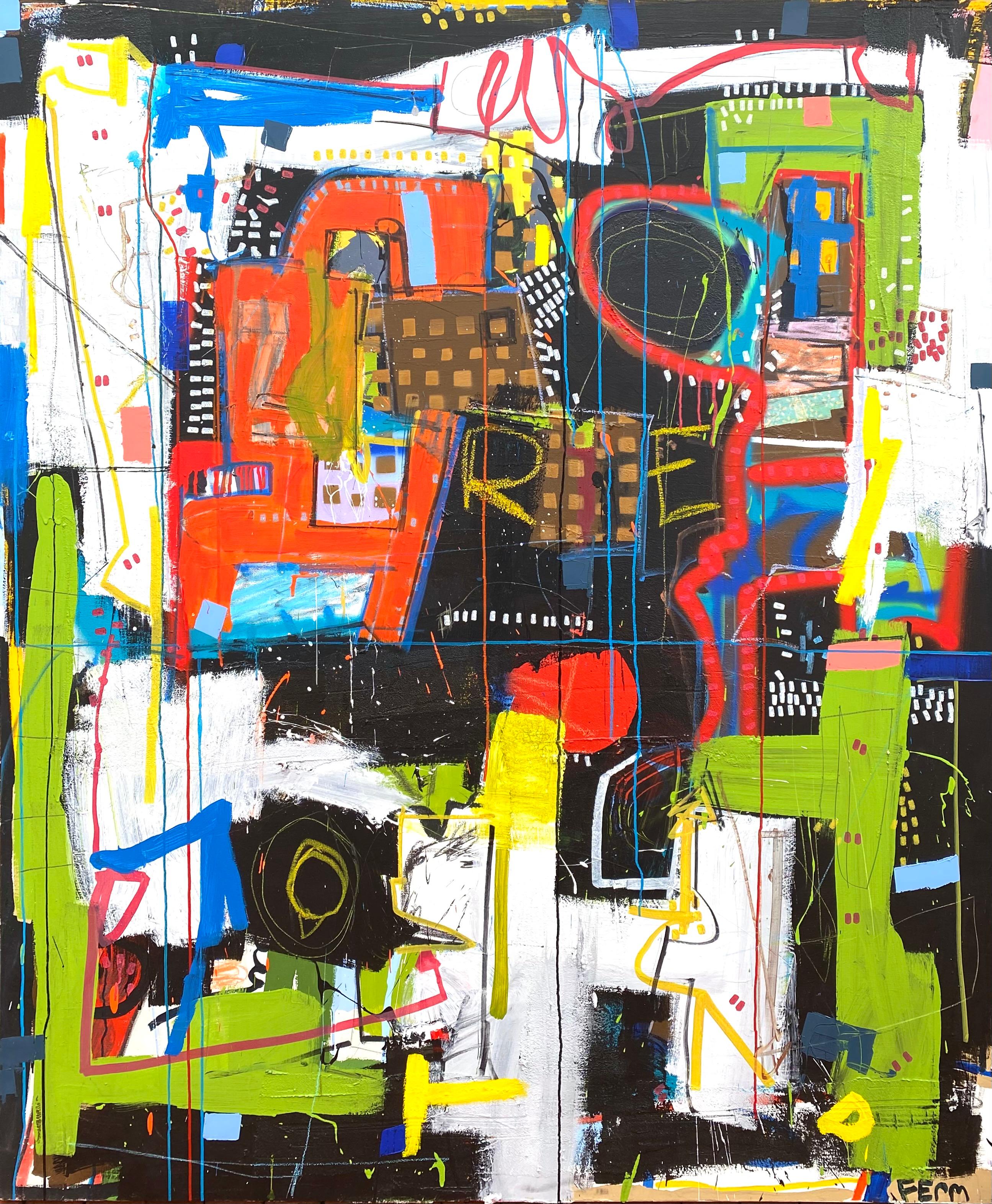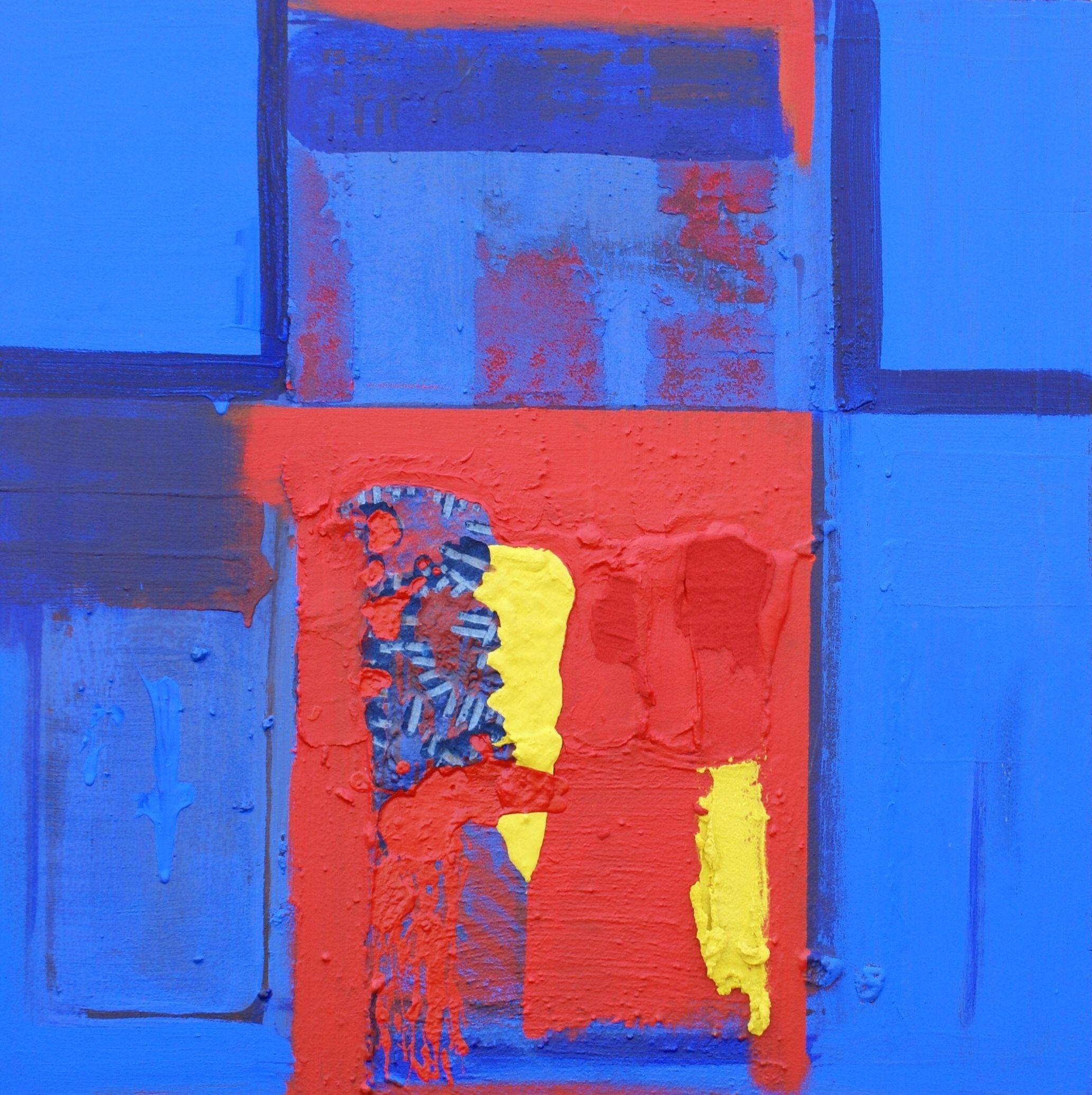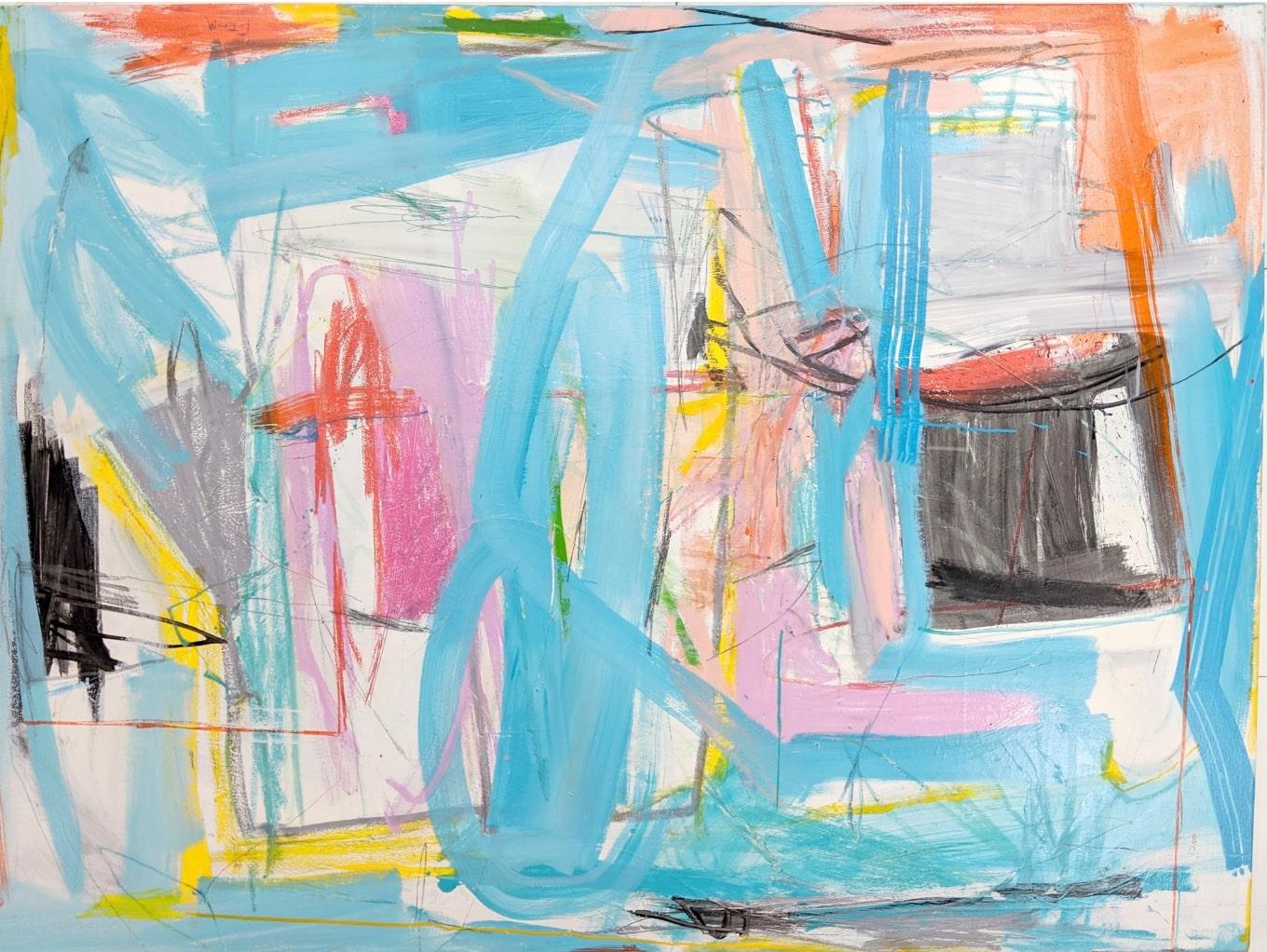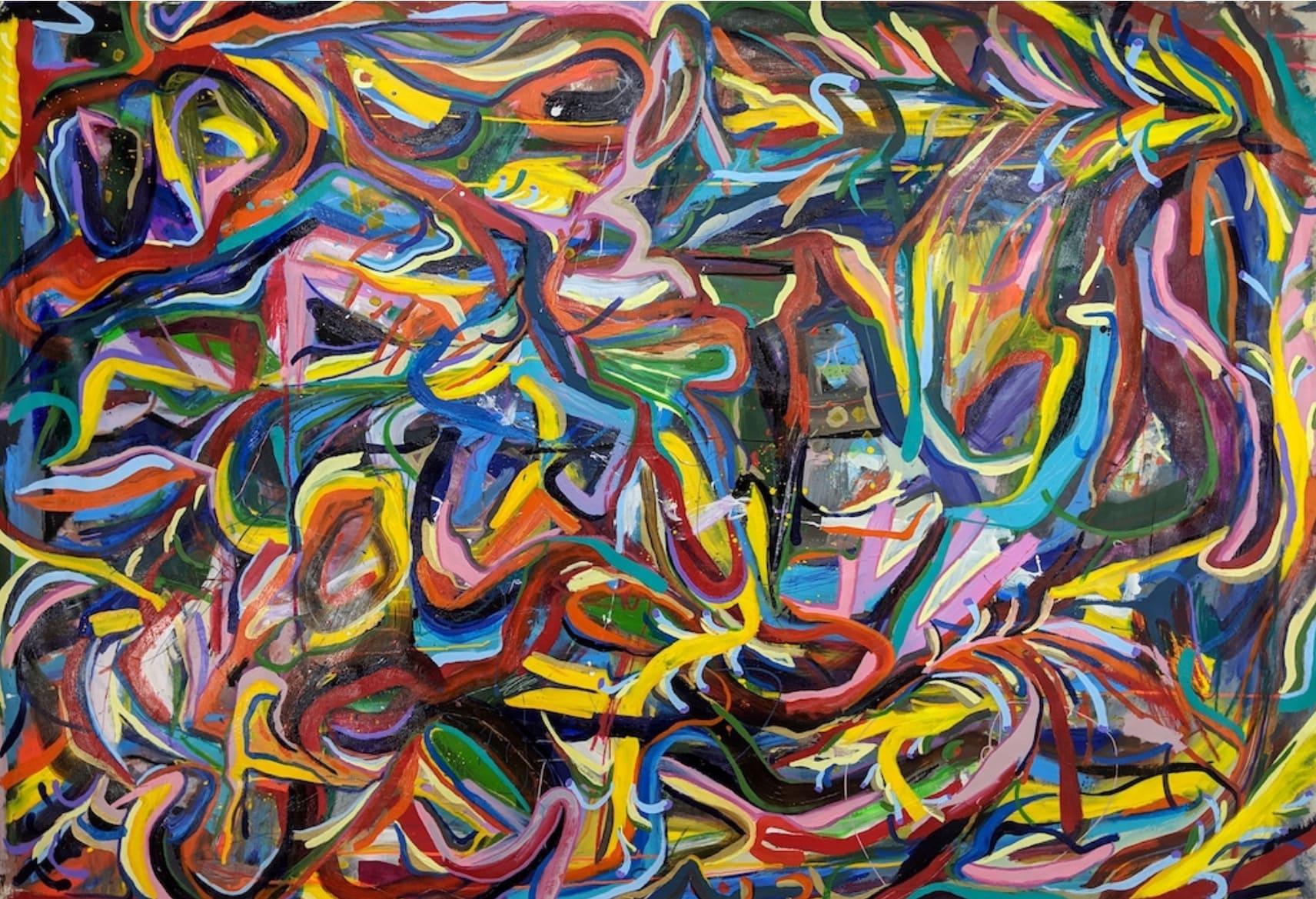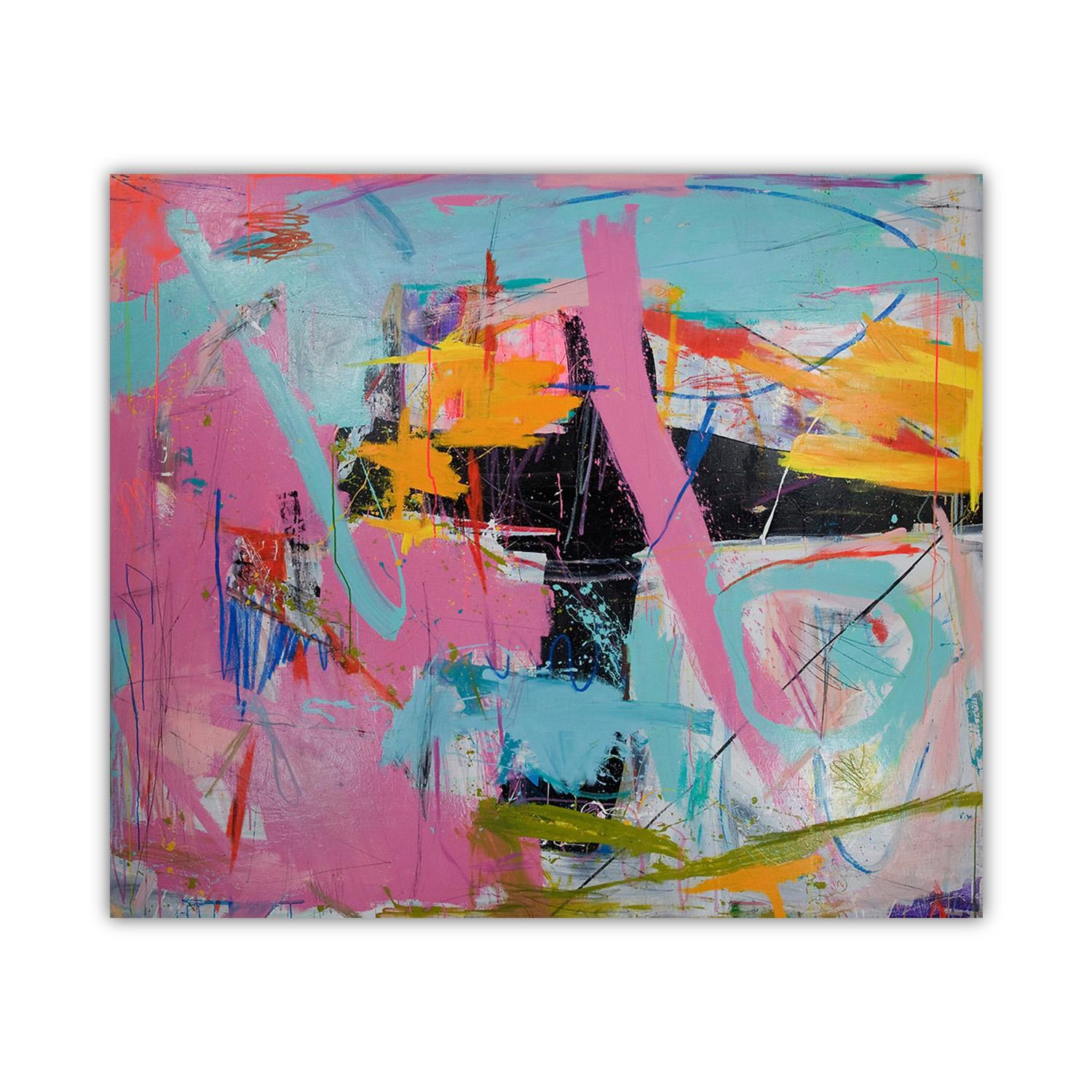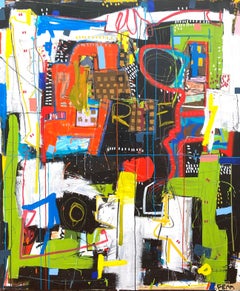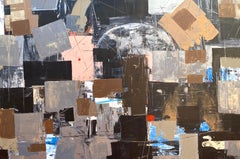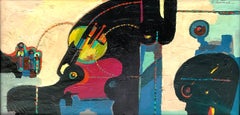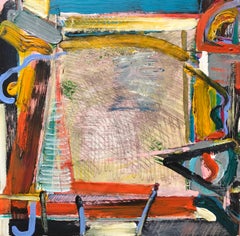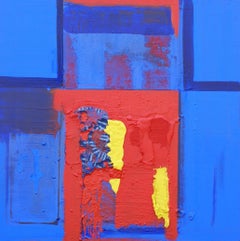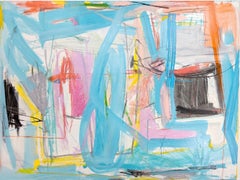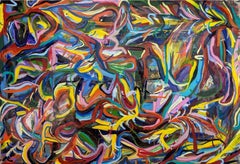Items Similar to “Domane”
Want more images or videos?
Request additional images or videos from the seller
1 of 8
Joseph Conrad Ferm“Domane”2012
2012
$19,500
£14,774.95
€16,953.08
CA$27,439.65
A$30,163.72
CHF 15,852.67
MX$366,297.44
NOK 197,758.06
SEK 187,361.85
DKK 126,525.14
About the Item
Original large original acrylic on canvas abstract painting by the well known American artist, Joseph Conrad Ferm. Condition is very good. Signed top right “Ferm”. Titled, signed and dated verso, 2012. Titled “Domane”, the latin translation, the King’s crown. The cavas is completely wrapped around stretcher on all sides so a frame is not necessary. Framing options however are available. Provenance: a Southampton, New York gentleman.
Joseph Conrad-Ferm
Joseph Conrad-Ferm is a self taught painter who did not discover his need to paint until age 26. With over 1,000 finished works on paper, canvas, and wood, Ferm's paintings are in public and private collections worldwide. His work is extensively used by interior designers and has been featured in design publications in the US. He currently resides in Cape Cod, MA.
- Creator:Joseph Conrad Ferm (American)
- Creation Year:2012
- Dimensions:Height: 72 in (182.88 cm)Width: 60 in (152.4 cm)Depth: 1.75 in (4.45 cm)
- Medium:
- Movement & Style:
- Period:
- Framing:Framing Options Available
- Condition:Presently unframed. Some moisture strains on bottom rear of canvas verso. Not visible on front of painting. Paint is stable.
- Gallery Location:Southampton, NY
- Reference Number:1stDibs: LU14115483572
About the Seller
5.0
Platinum Seller
Premium sellers with a 4.7+ rating and 24-hour response times
Established in 1977
1stDibs seller since 2013
547 sales on 1stDibs
Typical response time: 1 hour
- ShippingRetrieving quote...Shipping from: Southampton, NY
- Return Policy
Authenticity Guarantee
In the unlikely event there’s an issue with an item’s authenticity, contact us within 1 year for a full refund. DetailsMoney-Back Guarantee
If your item is not as described, is damaged in transit, or does not arrive, contact us within 7 days for a full refund. Details24-Hour Cancellation
You have a 24-hour grace period in which to reconsider your purchase, with no questions asked.Vetted Professional Sellers
Our world-class sellers must adhere to strict standards for service and quality, maintaining the integrity of our listings.Price-Match Guarantee
If you find that a seller listed the same item for a lower price elsewhere, we’ll match it.Trusted Global Delivery
Our best-in-class carrier network provides specialized shipping options worldwide, including custom delivery.More From This Seller
View All“The Greatest Story Ever Told”
By Joseph Conrad-Ferm
Located in Southampton, NY
Original acrylic on canvas painting by the well known American artist, Joseph Conrad Ferm. Condition is excellent. Signed lower right “Ferm”. Titled, signed and dated verso 2012. Un...
Category
2010s Post-Modern Abstract Paintings
Materials
Canvas, Acrylic
“Departure”
By Joseph Conrad-Ferm
Located in Southampton, NY
Original acrylic on canvas abstract painting titled “Departure” by Joseph Conrad Ferm. Signed “Ferm” by artist lower right. Signed, titled and dated 2014 verso. Condition is excell...
Category
2010s Contemporary Abstract Paintings
Materials
Canvas, Acrylic
“Untitled Abstract”
Located in Southampton, NY
Original oil on canvas abstract painting by the Czech/German artist, Walter Blumel. Signed upper right by the artist and verso as well. Condition is very good. Circa 1965. Overall ...
Category
1960s Abstract Expressionist Abstract Paintings
Materials
Canvas, Oil
“Untitled”
By Iliyan Ivanov
Located in Southampton, NY
Original acrylic on fiberboard painting by the Bulgarian/American artist, Iliyan Ivanov. Signed, and dated verso, 2012. Untitled. This painting is part of the “Memories of Unfinis...
Category
2010s Abstract Expressionist Abstract Paintings
Materials
Acrylic, Fiberboard
$1,480 Sale Price
20% Off
“Seagame”
By Syd Solomon
Located in Southampton, NY
0riginal acrylic on panel painting by the well known American artist, Syd Solomon. Signed Syd Solomon lower center. Signed and dated Syd Solomon 1971 and inscribed as titled on the reverse. 30 × 24 inches. Condition is very good, no issues. The painting is framed in its original wood with silver reveal floating frame. Overall framed measurements are 32.5 by 26.75 inches. Provenance: A private collector.
American, 1917-2004
SYD SOLOMON BIOGRAPHY:
Written by Dr. Lisa Peters/Berry Campbell Gallery
Syd Solomon was born near Uniontown, Pennsylvania, in 1917. He began painting in high school in Wilkes-Barre, where he was also a star football player. After high school, he worked in advertising and took classes at the Art Institute of Chicago. Before the attack on Pearl Harbor, he joined the war effort and was assigned to the First Camouflage Battalion, the 924th Engineer Aviation Regiment of the US Army. He used his artistic skills to create camouflage instruction manuals utilized throughout the Army. He married Ann Francine Cohen in late 1941. Soon thereafter, in early 1942, the couple moved to Fort Ord in California where he was sent to camouflage the coast to protect it from possible aerial bombings. Sent overseas in 1943, Solomon did aerial reconnaissance over Holland. Solomon was sent to Normandy early in the invasion where his camouflage designs provided protective concealment for the transport of supplies for men who had broken through the enemy line. Solomon was considered one of the best camoufleurs in the Army, receiving among other commendations, five bronze stars. Solomon often remarked that his camouflage experience during World War II influenced his ideas about abstract art. At the end of the War, he attended the École des Beaux-Arts in Paris.
Because Solomon suffered frostbite during the Battle of the Bulge, he could not live in cold climates, so he and Annie chose to settle in Sarasota, Florida, after the War. Sarasota was home to the John and Mable Ringling Museum of Art, and soon Solomon became friends with Arthur Everett “Chick” Austin, Jr., the museum’s first Director. In the late 1940s, Solomon experimented with new synthetic media, the precursors to acrylic paints provided to him by chemist Guy Pascal, who was developing them. Victor D’Amico, the first Director of Education for the Museum of Modern Art, recognized Solomon as the first artist to use acrylic paint. His early experimentation with this medium as well as other media put him at the forefront of technical innovations in his generation. He was also one of the first artists to use aerosol sprays and combined them with resists, an innovation influenced by his camouflage experience.
Solomon’s work began to be acknowledged nationally in 1952. He was included in American Watercolors, Drawings and Prints at the Metropolitan Museum of Art, New York. From 1952–1962, Solomon’s work was discovered by the cognoscenti of the art world, including the Museum of Modern Art Curators, Dorothy C. Miller and Peter Selz, and the Whitney Museum of American Art’s Director, John I. H. Baur. He had his first solo show in New York at the Associated American Artists Gallery in 1955 with “Chick” Austin, Jr. writing the essay for the exhibition. In the summer of 1955, the Solomons visited East Hampton, New York, for the first time at the invitation of fellow artist David Budd. There, Solomon met and befriended many of the artists of the New York School, including Jackson Pollock, Franz Kline, Willem de Kooning, James Brooks, Alfonso Ossorio, and Conrad Marca-Relli. By 1959, and for the next thirty-five years, the Solomons split the year between Sarasota (in the winter and spring) and the Hamptons (in the summer and fall).
In 1959, Solomon began showing regularly in New York City at the Saidenberg Gallery with collector Joseph Hirshhorn buying three paintings from Solomon’s first show. At the same time, his works entered the collections of the Whitney Museum of American Art, the Solomon R. Guggenheim Museum, and the Wadsworth Athenaeum in Hartford, Connecticut, among others. Solomon also began showing at Signa Gallery in East Hampton and at the James David Gallery in Miami run by the renowned art dealer, Dorothy Blau.
In 1961, the Guggenheim Museum’s H. H. Arnason bestowed to him the Silvermine Award at the 13th New England Annual. Additionally, Thomas Hess of ARTnews magazine chose Solomon as one of the ten outstanding painters of the year. At the suggestion of Alfred H. Barr, Jr., the Museum of Modern Art’s Director, the John and Mable Ringling Museum in Sarasota began its contemporary collection by purchasing Solomon’s painting, Silent World, 1961.
Solomon became influential in the Hamptons and in Florida during the 1960s. In late 1964, he created the Institute of Fine Art at the New College in Sarasota. He is credited with bringing many nationally known artists to Florida to teach, including Larry Rivers, Philip Guston, James Brooks, and Conrad Marca-Relli. Later Jimmy Ernst, John Chamberlain, James Rosenquist, and Robert Rauschenberg settled near Solomon in Florida. In East Hampton, the Solomon home was the epicenter of artists and writers who spent time in the Hamptons, including Alfred Leslie, Jim Dine, Ibram Lassaw, Saul Bellow, Barney Rosset, Arthur Kopit, and Harold Rosenberg.
In 1970, Solomon, along with architect Gene Leedy, one of the founders of the Sarasota School of Architecture, built an award-winning precast concrete and glass house and studio on the Gulf of Mexico near Midnight Pass in Sarasota. Because of its siting, it functioned much like Monet’s home in Giverny, France. Open to the sky, sea, and shore with inside and outside studios, Solomon was able to fully solicit all the environmental forces that influenced his work. His friend, the art critic Harold Rosenberg, said Solomon’s best work was produced in the period he lived on the beach.
During 1974 and 1975, a retrospective exhibition of Solomon’s work was held at the New York Cultural Center and traveled to the John and Mable Ringling Museum in Sarasota. Writer Kurt Vonnegut, Jr. conducted an important interview with Solomon for the exhibition catalogue. The artist was close to many writers, including Harold Rosenberg, Joy Williams, John D. McDonald, Budd Schulberg, Elia Kazan, Betty Friedan...
Category
1970s Abstract Expressionist Abstract Paintings
Materials
Panel, Acrylic
$21,000
“Untitled Abstract”
By Martin Rosenthal
Located in Southampton, NY
Original abstract oil painting on heavy card stock by the American artist Martin Rosenthal. Signed lower left and dated 1960. Condition is very good. Slight bow to board. Nicely pro...
Category
1960s Abstract Expressionist Abstract Paintings
Materials
Oil, Board
$2,080 Sale Price
20% Off
You May Also Like
Belgian Contemporary Art by Jean-Roch Focant - La Momie
Located in Paris, IDF
Pigments, sand glue & acrylic on wood
Category
2010s Abstract Abstract Paintings
Materials
Wood, Glue, Acrylic, Pigment
Abstract Home away from Painting by Joseph Conrad-Ferm, Mixed Media on Canvas
By Joseph Conrad-Ferm
Located in New York, NY
Home Away from by Joseph Conrad-Ferm
2017
54 x 72 inches
Mixed Media on Canvas
Category
21st Century and Contemporary Abstract Expressionist Abstract Paintings
Materials
Mixed Media, Acrylic
Belgian Contemporary Art by Jean-Roch Focant - Le Coin du Voile
Located in Paris, IDF
Pigments, sand glue & acrylic on wood
Category
2010s Abstract Abstract Paintings
Materials
Wood, Glue, Acrylic, Pigment
Abstract Taking Its Course Painting by Joseph Conrad-Ferm, Mixed Media on Canvas
By Joseph Conrad-Ferm
Located in New York, NY
Taking Its Course by Joseph Conrad-Ferm
2019
66 x 98 inches
Mixed Media on Canvas
Category
21st Century and Contemporary Abstract Expressionist Abstract Paintings
Materials
Mixed Media, Acrylic
Abstract My Coup Painting by Joseph Conrad-Ferm, Acrylic Mixed Media on Canvas
By Joseph Conrad-Ferm
Located in New York, NY
My Coup by Joseph Conrad-Ferm, 2015
Mixed media abstract painting on canvas.
W 76" X H 86" X D 1.25"
Ferm’s “My Coup” is centralized with a black structure, essentially dividing t...
Category
2010s Abstract Abstract Paintings
Materials
Mixed Media
Abstract #63
By Tom Reno
Located in Austin, TX
Title: "Abstract #63"
Medium: Acrylic on canvas
Creation Date: 2019
Markings: signed on back
Size: 60" x 48"
Tom Reno is an abstract artist originally from Southern California who n...
Category
2010s Abstract Expressionist Abstract Paintings
Materials
Canvas, Acrylic
More Ways To Browse
Muzaffar Abdullaev
Neutral Wall Art
Nicolas Poliakoff
Peter Rodulfo
Petra Schott
Smiley Face Art
Stephen Gilbert
The Long Goodbye
Thornton Willis
Tommy Lennartsson
Topaz Painting
Umbrella Abstract Painting
Vakho Bugadze
Yellow Figure Abstract Painting
1930s Abstract Oil Paintings
9th Street Art
A David Crown
A Raymond Katz
